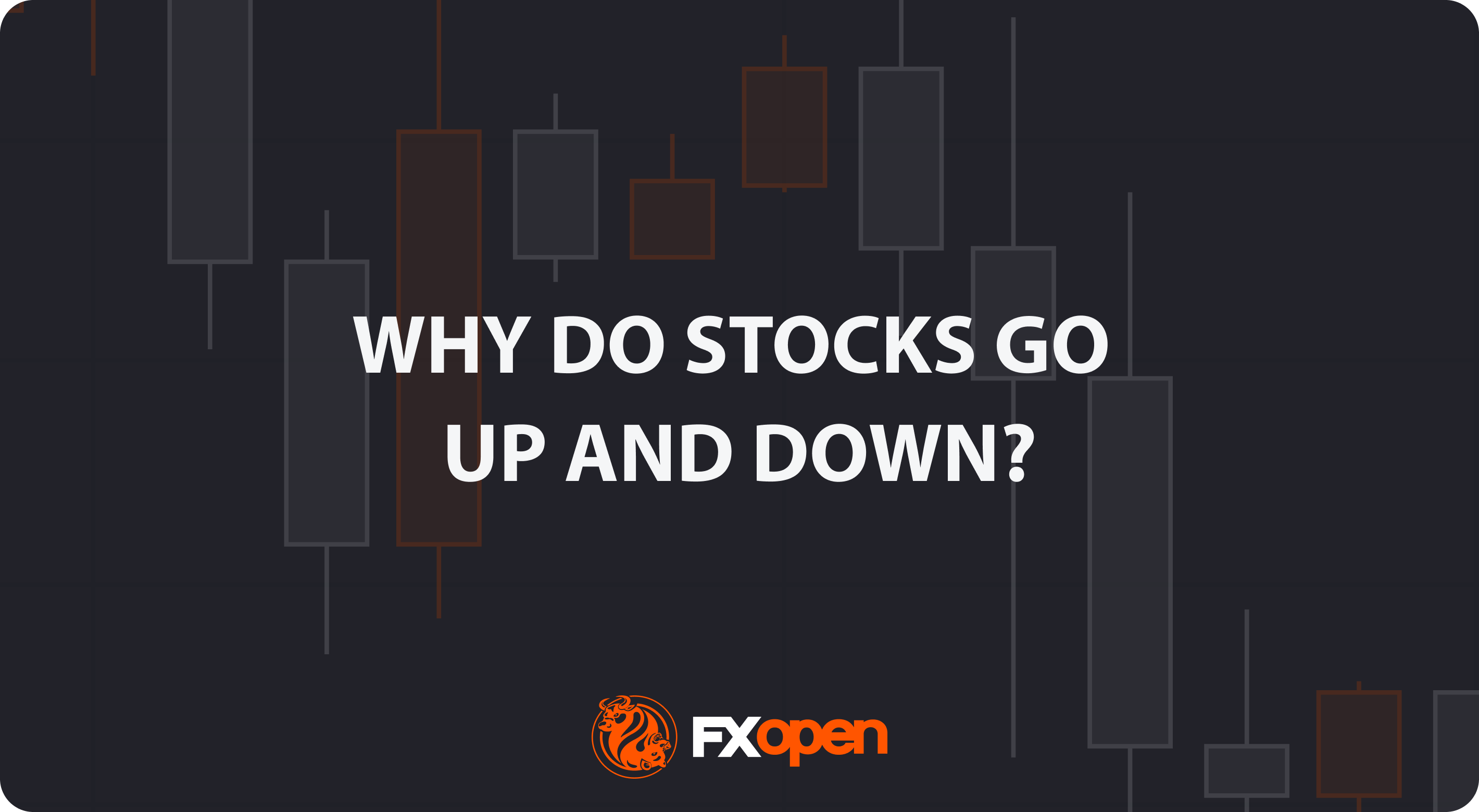FXOpen

The Dow Jones Industrial Average (DJIA) is one of the world’s most recognised stock indices, often seen as a barometer for the US economy. Tracking 30 influential companies, the DJIA offers insights into market trends and economic shifts. This article explores what the DJIA represents, how it’s constructed, and how to trade it.
Dow Jones Definition
The Dow Jones Industrial Average, usually abbreviated to DJIA or DJI, is one of the most well-known stock indices globally, often called simply "the Dow." This index tracks 30 of the publicly traded companies in the US, including major names like Apple, Boeing, and Goldman Sachs. Designed to represent a cross-section of the American economy (although it does not include utilities or transportation companies), the DJIA provides a snapshot of market sentiment and economic health through the performance of these companies.
The DJIA was founded in 1896 by Charles Dow and Edward Jones, initially with 12 major industrial companies. Over time, Dow Jones Industrial Average companies evolved to include corporations across diverse sectors, though it's worth noting that these are all large-cap companies, meaning they have substantial market values.
Importantly, the Dow is price-weighted, meaning in DJIA, a stock’s price directly affects the index value — stocks with higher prices hold more influence over the index's movements than those with lower prices. So, a stock priced at $300 will impact the DJIA more than one priced at $100, even if the latter company is larger in overall market value. For example, high-priced DJIA stocks like Goldman Sachs or UnitedHealth often drive the index’s movements more than lower-priced yet substantial companies like Cisco. As a result, the index is unique compared to indices weighted by market capitalisation, like the S&P 500.
The Dow’s movements can reflect broader market trends, but it provides less of a complete representation of the economy or stock market than the S&P 500 or Russell 2000 since it includes only 30 companies. Nonetheless, traders often look to the Dow Jones index as an indicator of market strength or weakness. When these 30 companies perform well, it often signals broader economic optimism; when they struggle, it can be a sign of potential downturns.
Components and Weighting of the DJIA
The Dow Jones Industrial Average consists of 30 large-cap US companies across sectors like technology, finance, healthcare, and industrials. Changes to the DJIA’s stocks are rare but do happen when companies no longer reflect the US economic landscape. For instance, a business facing long-term decline may be replaced by a rising industry leader to keep the index relevant. These decisions are made by a committee that aims to ensure the DJIA remains a meaningful snapshot of the economy despite its relatively small roster of companies.
What Stocks Are in the Dow Jones?
As of November 2024, there are several notable and well-recognised companies in the Dow, including:
- Apple Inc.
- Microsoft Corporation
- Amazon.com Inc.
- The Coca-Cola Company
- Goldman Sachs Group Inc.
- Johnson & Johnson
- McDonald's Corporation
- Boeing Company
- Visa Inc.
- Procter & Gamble Co.
Factors Affecting the DJIA’s Movements
The DJIA can swing up or down due to various factors, reflecting shifts in the economy, company-specific developments, and broader market sentiment. The primary elements driving the index include:
- Economic Indicators: Key data releases, like GDP growth, employment reports, and inflation rates, directly impact the DJIA. Strong economic indicators tend to lift the index as they suggest a healthy business environment, while weaker data can pull it down, signalling potential challenges for major companies.
- Interest Rates: Interest rate changes, particularly from the Federal Reserve, play a significant role. When rates rise, borrowing becomes more expensive, which can reduce corporate profits and weigh on the Dow Jones Industrial Average’s stocks. Conversely, lower rates often encourage investment and consumer spending, which can boost the index.
- Corporate Earnings Reports: Quarterly earnings announcements from the 30 DJIA companies are critical. Positive earnings results can lift the Dow, especially if they beat market expectations and are from one of its pricier components. Conversely, disappointing earnings can drag down the index, especially if they reflect broader industry or sector weaknesses.
- Global Events: Major global developments, like geopolitical tensions, trade agreements, or health crises, can quickly shift market sentiment. For instance, the onset of the COVID-19 pandemic caused sharp declines in the DJIA as economic concerns spiked.
- Sectoral Influence: The DJIA’s performance can be significantly impacted by trends within particular sectors, especially those with higher-priced stocks. For instance, if several tech companies in the index perform well, they can drive up the DJIA, given their substantial influence.
- Market Sentiment: General market optimism or fear often moves the DJIA, influenced by factors like investor confidence, media coverage, and broader economic outlooks. Indicators such as the VIX (volatility index) can help gauge this sentiment and reflect periods of heightened volatility.
Trading the DJIA with CFDs
While traders have various ways to access the Dow Jones Industrial Average—from ETFs to futures—many prefer trading DJIA Contracts for Difference (CFDs) for their flexibility and accessibility. CFDs allow traders to speculate on the DJIA’s price movements without owning the actual assets in the index.
One of the benefits of CFDs is that they enable both long and short positions, so traders can potentially take advantage of rising or falling markets. CFDs also allow for leveraged trading, meaning traders can control a larger position with a smaller upfront investment. However, leverage amplifies both potential returns and risks, making risk management essential when trading CFDs.
For those interested in DJIA CFDs, FXOpen provides access to these contracts in our TickTrader platform under the Dow ticker WS30m, giving traders an easy-to-use, responsive way to monitor and trade the index.
How Traders Analyse the DJIA
Traders use several analysis methods to interpret the DJIA’s movements, aiming to understand trends, gauge sentiment, and identify potential trading opportunities. Some of the most common approaches include:
Fundamental Analysis
Fundamental analysis involves examining economic data and financial statements of DJIA companies. Traders look at metrics like revenue growth, earnings, and profit margins to gauge the health of the companies within the index. Broader economic indicators, such as unemployment rates or consumer confidence, are also essential in understanding how macroeconomic conditions may impact the Dow.
Technical Analysis
Many traders rely on technical analysis to spot trends and key price levels. Common tools include moving averages, which smooth out price data to identify direction over time, and support and resistance levels, which highlight areas where the DJIA price has historically paused or reversed. Trendlines help traders visualise the overall direction, and indicators like the Relative Strength Index (RSI) show whether the index might be overbought or oversold.
Market Sentiment and Positioning Analysis
Gauging the mood of the market is crucial, especially with an index as prominent as the DJIA. Sentiment analysis involves looking at factors like trading volume and indicators such as the VIX (volatility index), which measures market expectations for near-term volatility.
It’s also possible to interpret the positioning of traders in DJIA futures (expressed with the DJI ticker YM) via the CFTC Commitment of Traders report for insights into how various market participants are taking positions in the Dow. For instance, if the number of contracts held by non-commercials and speculators is positive, these participants are seen as bullish.
Correlation Analysis
Traders sometimes analyse correlations between the DJIA and other indices or assets. For example, the DJIA often moves alongside the S&P 500, but these correlations can shift based on economic or sector-specific developments. Through understanding these relationships, traders can anticipate how broader market trends might impact the Dow.
Risks Associated with Trading the DJIA
Trading the DJIA can be rewarding, but it comes with notable risks. One key risk is market volatility. Events like economic data releases, policy changes, or unexpected global events can cause sharp swings in the Dow’s value, creating opportunities but also increasing the chance of sudden losses.
Another risk comes from leverage, especially with derivatives like CFDs. While leverage allows traders to control larger positions with less capital, it amplifies both returns and losses. Even a small adverse movement in the DJIA can lead to significant losses if leveraged positions aren’t managed carefully.
Economic sensitivity is another factor. As the DJIA reflects the performance of large US companies, it’s highly sensitive to shifts in economic indicators like inflation and interest rates. A surprise rate hike or economic slowdown can affect the entire index, impacting all traders with positions in the DJIA.
Finally, liquidity risks can arise, particularly in after-hours trading when market depth is thinner. This can lead to wider spreads and increased costs for those looking to enter or exit trades outside standard market hours.
The Bottom Line
The Dow Jones Industrial Average offers valuable insights and trading opportunities for those interested in the broader US economy. With a clear understanding of its components, influencing factors, and trading approaches, traders can navigate the DJIA trading confidently. Ready to get started with our low-cost, high-speed trading environment? Open an FXOpen account and explore DJIA CFDs on a platform built for traders at every level.
FAQ
What Is the Dow Jones Industrial Average?
The Dow Jones meaning refers to a stock market index that tracks 30 large publicly traded companies in the United States. Known simply as "the Dow" and abbreviated to DJIA, it provides a quick view of the economic performance of some of the largest and most influential companies across various sectors.
What Does the Dow Jones Measure?
The DJIA measures the performance of 30 significant US companies, reflecting broader economic trends and investor sentiment. As a price-weighted index, stocks with higher share prices exert more influence on the Dow’s total value.
How Many Stocks Are in the Dow Jones?
There are 30 stocks in the DJIA, representing companies from diverse industries like technology, finance, and healthcare.
What Is the Highest the Dow Jones Has Been?
As of 7 November 2024, the highest Dow Jones ever was $43,823.10, marking a record peak for the index.
Is the DJI Publicly Traded?
The DJIA itself isn’t publicly traded, but traders can invest in its performance through ETFs, futures, and CFDs that track its value.
This article represents the opinion of the Companies operating under the FXOpen brand only. It is not to be construed as an offer, solicitation, or recommendation with respect to products and services provided by the Companies operating under the FXOpen brand, nor is it to be considered financial advice.
Stay ahead of the market!
Subscribe now to our mailing list and receive the latest market news and insights delivered directly to your inbox.








